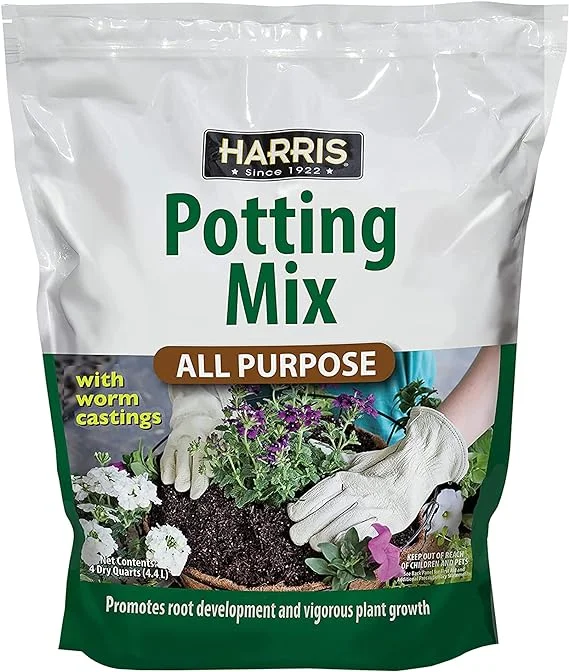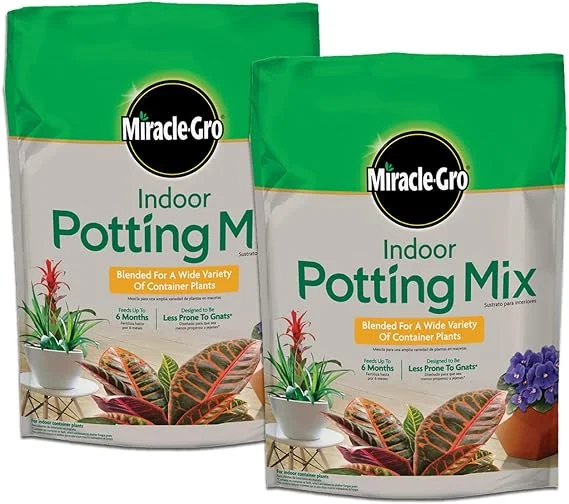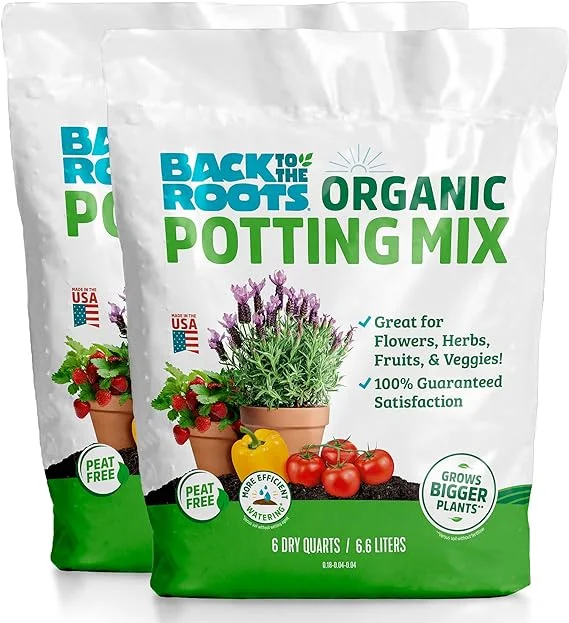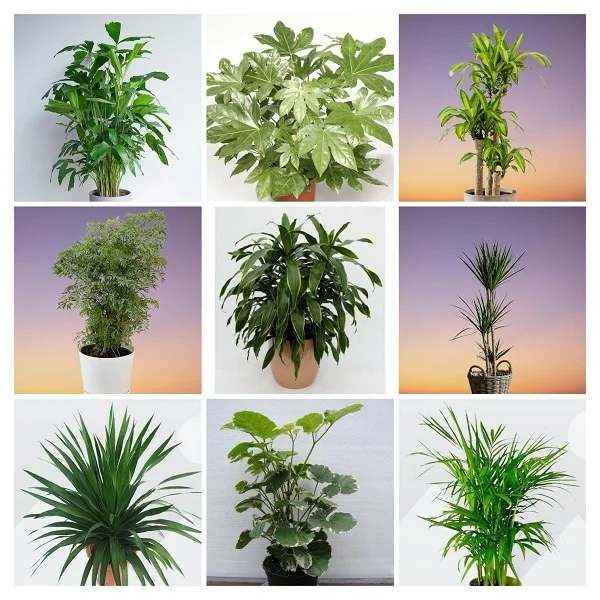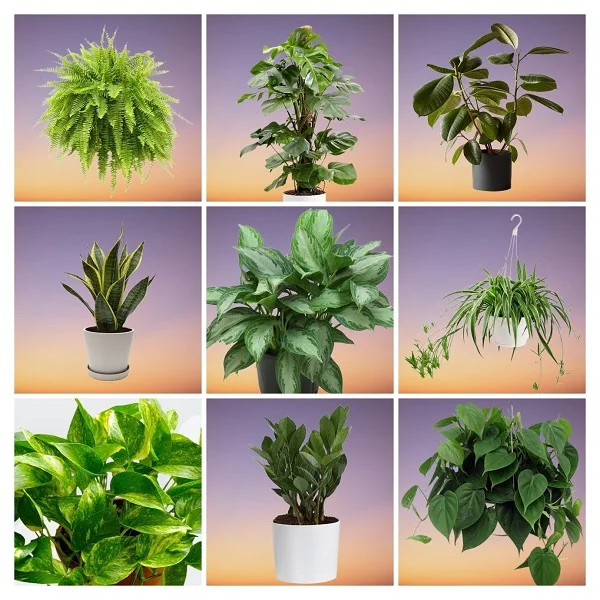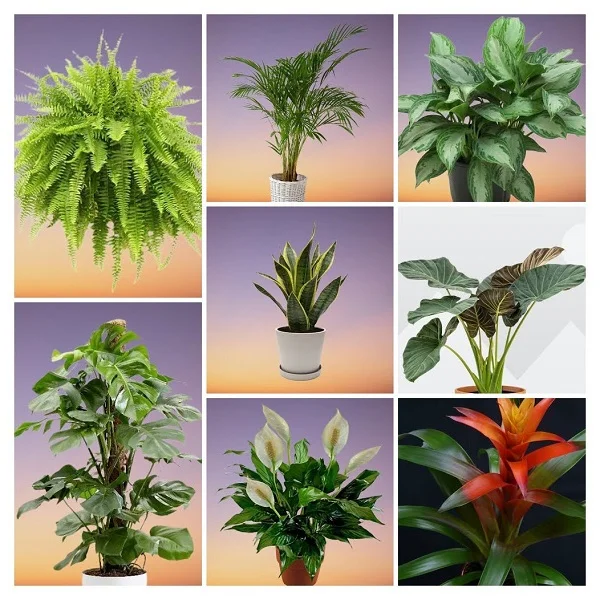How to Grow and Care for Dypsis lutescens (Areca Palm) Indoors
Some links in this post may be affiliate links
Dypsis lutescens (Areca Palm) thrives in bright indirect light, average warmth and humidity, and moderately moist, rich, well-drained soil coupled with monthly feeding in spring and summer.
Areca Palm also called Butterfly Palm or Golden Cane Palm is among the popular palms which will add an unmatched exotic feel in any space.
Butterfly Palm belongs to a group of palms (called cane palms) which produce tall reed-like stems which look like bamboo canes when mature.
Golden Cane Palm bears smooth yellowish bamboo-like canes and beautiful yellowish-green leaflets. The long, feathery fronds grow in a canopy lending an air of elegance and sophistication in any space.
Butterfly Palm's fronds grow in clusters or thick clumps. The clusters comprising of 6-8 stems on which arise long petioles which curve upwards giving the palm the butterfly appearance.
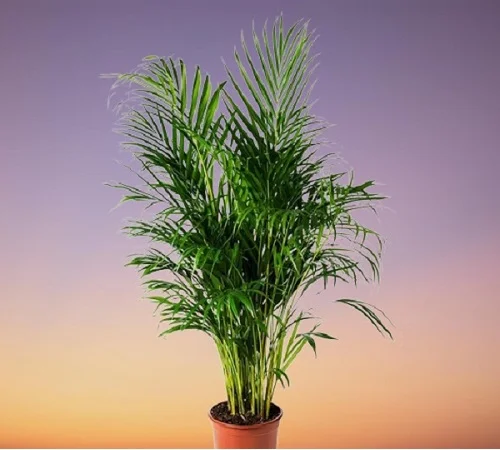
Botanical name: Dypsis lutescens
Synonym: Chrysalidocarpus lutescens
Family: Arecaceae
Common names: Areca Palm, Butterfly Palm, Golden Cane Palm, Yellow palm
Origin
Dypsis lutescens also called Chrysalidocarpus lutescens has its origins in Madagascar. It has been naturalized in many parts of the world like the Andaman Islands, El Salvador, Cuba, Puerto Rico, the Canary Islands, southern Florida, the Dominican Republic, Jamaica, the Leeward Islands and the Leeward Antilles.
Size
Golden Cane Palm can grow to a height of 6-10 feet under good conditions. The fronds may reach 3 feet or more. The palm grows slowly and may take a few years to reach the average height of 6 feet making it one of the best tree-like plants for any space.
Does Dypsis lutescens purify the air?
Yes. According to the NASA Clean Air Study, Areca Palm was found to be among the best air-cleaning plants and removes formaldehyde, xylene and toulene from indoor air.
Is Dypsis lutescens toxic?
No. Dypsis lutescens is non-toxic to humans and pets as indicated by ASPCA. Areca Palm is safe for cats, dogs and other pets; it is among the pet-friendly plants that you can grow in the home and any space.
Where to Buy
If you would like to add Golden Cane Palms to your collection, you may acquire them online from Amazon (Link to Amazon) or from Etsy (Link to Etsy).
How to Care for Dypsis lutescens Indoors
To care for Dypsis lutescens indoors, provide bright indirect light (filtered light), warmth of 15-260C, humidity of 50-55% and moderately moist, fertile, well-drained potting soil coupled with monthly feeding in spring and summer.
Areca Palm has no need for frequent repotting as it grows best when slightly pot-bound. It requires regular pruning to keep it neat and also discourage pest and disease infestations. Keep reading for more on these growing conditions and how to achieve them.
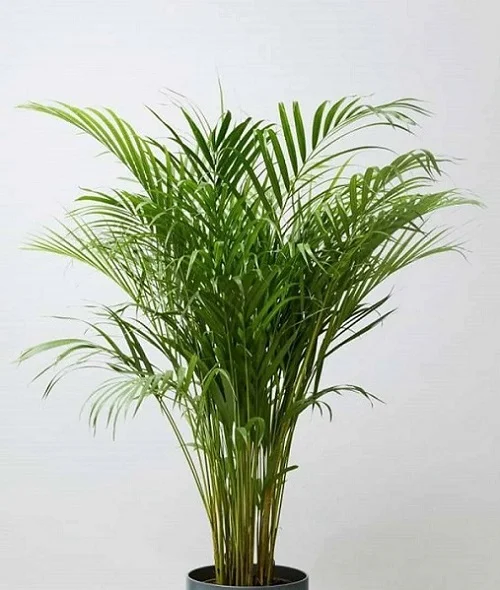
Light Requirements
Do Areca Palms need sunlight?
No. Areca Palm grows best in bright indirect light (dappled light). Keep it away from direct sunlight to prevent the leaves from developing a yellowish color.
Too little light will result in reduced growth, yellowing and leggy growth. Where the natural light is not sufficient, you may use full spectrum grow lights to supplement it.
Regularly rotate the pot to ensure that the plant receives light on all sides for even growth to prevent lop-sided growth.
Watering
How often do I water Dypsis lutescens?
Water Dypsis lutescens liberally in spring and summer while allowing the top 2-3 inches of soil to dry out between waterings. Keep the soil moderately moist and avoid overwatering to prevent rotting and yellowing.
Reduce watering in fall and winter to maintain the soil slightly moist as growth is reduced at this time. Never allow the soil to dry out completely to prevent wilting, browning and yellowing.
Use chlorine-free water to prevent staining and browning of leaf tips and edges. Ensure that the water is at room temperature to avoid cold shock which can result in stunted growth and yellowing.
Take care not to wet the base as it can lead to rotting and eventual death of the palm. Empty the catch plate after watering; do not allow the palm to sit in soggy soil as it can lead to root-rot and loss of the palm.
Use well-draining soil and a pot with a drainage hole to prevent waterlogging as it can result in root-rot, yellowing and death of the plant.
Temperature & Humidity
Dypsis lutescens flourishes in a warmth of 15-260C with a minimum of 120C in the cold season. Keep it away from frost and cold drafts as they can cause stunted growth, brown leaf tips and eventual death of the palm.
Areca Palm has no need for extra humidity; a humidity of 50-55% is adequate for this palm. However, where the temperatures are very high causing the air to be too dry, set the pot on a wet pebble tray or use a cool mist humidifier to increase humidity. Maintain good air flow to discourage fungal diseases.
Fertilizer
What is the best feed for Areca Palm?
Feed Areca Palm with a balanced, liquid fertilizer on monthly basis in spring and summer to promote a lush growth. Withhold feeding in fall and winter to prevent fertilizer burn as the growth is minimal at this time.
Take care not to overfeed the palm as it can lead to yellowing of the fronds. To prevent salts build up which is indicated by leaf burn and brown spots, regularly flush them out from the soil.
Run a stream of water through the soil until water comes out through the drainage hole. Allow the stream of water to run for some time and repeat the process several times.
Potting Soil
The best potting mix for Dypsis lutescens is a well-draining soil that is rich in organic matter that does not easily get soggy while providing the required nutrients. A blend of 2 parts organic potting mix and 1 part perlite (for drainage) is ideal for Areca Palm.
Repotting
Repot Areca Palm every 3 years when it has overgrown its current pot or the potting medium has completely broken down. Keep it crowded to prevent it from growing too fast.
Use a pot that has a drainage hole and loose, free-draining soil to avoid getting soggy soil as it can lead to root-rot. Take a look at these pots with drainage holes on Amazon.
Apply a slow release fertilizer to the potting soil to promote faster establishment. The fertilizer will be adequate for the next 3-4 months.
Take care not to damage the roots and don't try to seperate or spread out the roots. Water the palm thoroughly and gently press down the soil to get rid of air pockets.
Pruning & Grooming
Pruning Areca Palm is easy; cut away the old brown and dry fronds near the soil surface to maintain the palm neat and tidy as well as discourage pest and disease infestations.
Where seeds are required for propagation, allow the fruits to mature and drop then cut away the spent flower stalk. If the seeds are not needed, cut away the flower stalk immediately it begins to form to prevent the palm from wasting energy on developing the flowers and seeds.
Occasionally clean the mature leaves by damp-wiping with a soft cloth to get rid of dust as well as discourage pests and diseases.
Dypsis lutescens Propagation
Areca Palm (Dypsis lutescens) is propagated from seeds, offshoots or by plant division in spring to early summer for faster establishment.
Learn how to propagate Areca Palm (Dypsis lutescens propagation).
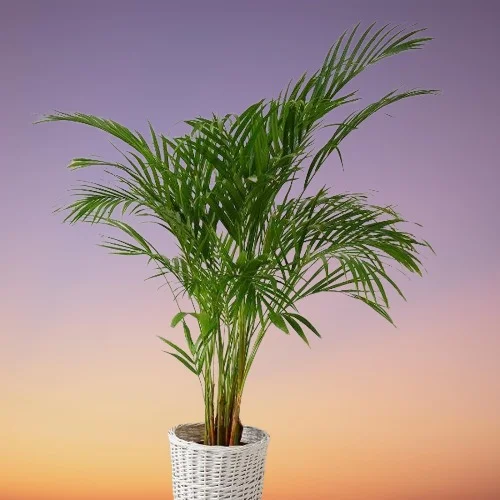
Dypsis lutescens Problems & Remedies
Areca Palm (Dypsis lutescens) problems are brown leaf tips, yellow leaves, brown leaves, brown leaf spots, diseases and pests among others. Keep reading for more on these problems and their solutions.
Brown leaf tips
Why are the tips of my Areca Palm turning brown?
Brown leaf tips on Areca Palm are caused by dry air, underwatering, cold drafts or touching.
How to fix it
Trim off the brown tips with sharp, sterilized scissors to keep the palm neat and tidy.
Dry air: To raise humidity, set the pot on a wet pebble tray, use a cool mist humidifier, group the plants together or grow the plant in a well-lit bathroom and other humid areas in the home.
Underwatering: Water when the top 2-3 inches of soil fry out but do not allow the soil to dry out completely.
Cold drafts: Keep the palm away from cold drafts like windy doors and windows, AC units among others to maintain a warmth of 15-260C.
Touching: Place the palm away from the line of traffic to avoid bruishing.
Yellow leaves
Some of the causes of yellow leaves on Areca Palm are too little light, soggy soil, inconsistent watering, drafts, nutrients deficiency or aging.
How to fix it
Too little light: Position the plant in bright indirect light or use a grow light if you do not have enough light in your home.
Soggy soil: Use well-draining soil and a pot with a drainage hole.
Inconsistent watering: Water when the top 2-3 inches of soil feel dry to the touch but do not allow the soil to dry out completely.
Drafts: Keep the plant away from sources of drafts like hot air vents, AC units, hot surfaces, windy doors among others.
Nutrients deficiency: Feed the plant with a balanced, water-soluble fertilizer every 4 weeks in spring and summer.
Aging: This is a natural process. As the lower leaves mature, they turn yellow, brown and eventually die.
Brown leaves
The main causes of brown leaves on Dypsis lutescens are inconsistent watering, soggy soil temperature stress, dry air or salts buildup.
How to fix it
Inconsistent watering: Do not water on a schedule. Water when the top 2-3 inches of soil feel dry to the touch.
Soggy soil: Use a pot with a drainage hole and well-draining soil.
Temperature stress: Keep the plant away from sources of drafts like AC units, windy doors, heat sources, hot air vents among others.
Dry air: Set the pot on a wet pebble tray, use a cool mist humidifier or group the plants together to elevate humidity.
Salts buildup: Avoid too much fertilizer and do not feed in fall and winter. Flush out excess chemicals from the soil.
Sooty flecks on the fronds
Sooty flecks on the fronds of Areca Palm are normal. Clean them off by gently wiping them off with a soft damp cloth.
Brown leaf spots
Brown leaf spots on Areca Palm are caused by soggy soil, drafts, direct sunlight or leaf spot disease.
How to fix it
Remove the affected leaves and discard them.
Soggy soil: Ascertain that the pot has a drainage hole and the soil is free-draining.
Drafts: Place the palm away from sources of drafts like AC units, heat sources, stoves, windy doors, drafty windows and others.
Direct sunlight: Move the plant away from direct sunlight or use a light curtain to filter the sunshine.
Leaf spot disease: which is prevalent in warm, damp, stuffy conditions. Look out for brown, moist spots on the foliage which may enlarge, merge and kill the whole leaf. See below under 'diseases' on how to control the disease.
Diseases
Areca Palm is prone to the following 2 diseases:
(a) Leaf spot disease which is characterized by brown, moist spots on the foliage. In a serious attack the spots can enlarge and merge, killing the whole leaf.
How to fix it
- Remove and burn the affected parts of the plant to reduce the risk of spread to the rest of the plants.
- Spray the affected plant with a systemic fungicide and ensure that all the parts are completely covered with the fungicidal solution.
- Keep the plant on the dry side and do not mist it.
- Maintain good air flow to discourage the disease.
- Use a pot with a drainage hole and a well-draining soil to avoid sogginess.
(b) Root-rot disease which is a fungal disease prevelant in soggy soil. It is characterized by wlting, yellowing and browning of the leaves which is rapidly followed by plant collapse.
How to fix it
- Carefully, slip the plant out of its pot and inspect the roots. Brown mushy roots indicate root-rot.
- Cut the brown-black roots and treat the healthy roots with a copper-based fungicidal solution as recommended by the manufacturer.
- Repot the plant in fresh, well-draining soil and keep it dry for some time before resuming watering.
- Ensure that the pot has a drainage hole to prevent the soil from getting soggy.
- Reduce watering in fall and winter as growth is minimal at this time, therefore, the plant does not need much water.
Pests
Common pests on Dypsis lutescens are spider mites, scales and mealybugs which are common in stuffy, dry conditions.
How to fix it
- Isolate the affected plant to prevent spread to other plants.
- Treat the plant with an insecticidal soap or neem oil as per the manufacturer's recommendations.
- Regularly check underneath and between the leaves for these pests and carry out timely control measures.
- Maintain the plant well pruned and elevate humidity to minimize the pest infestations.
You liked it? Share on social media.
Related Content
Amazon Associates Disclosure
Homeplantsguide.com is a participant in the Amazon Services LLC Associates Program, an affiliate advertising program designed to provide a means for sites to earn advertising fees by advertising and linking to amazon.com.
